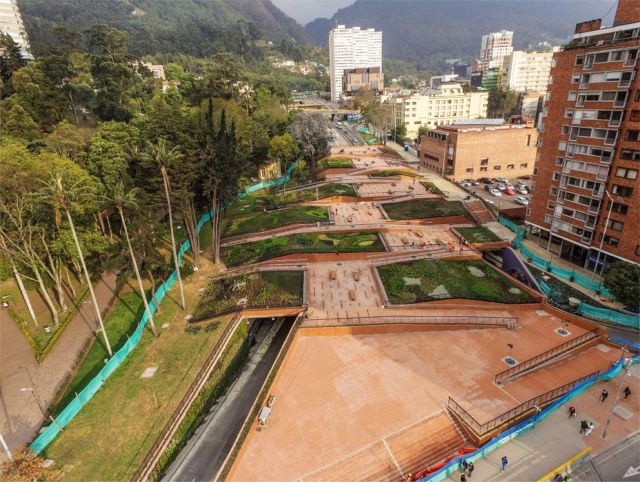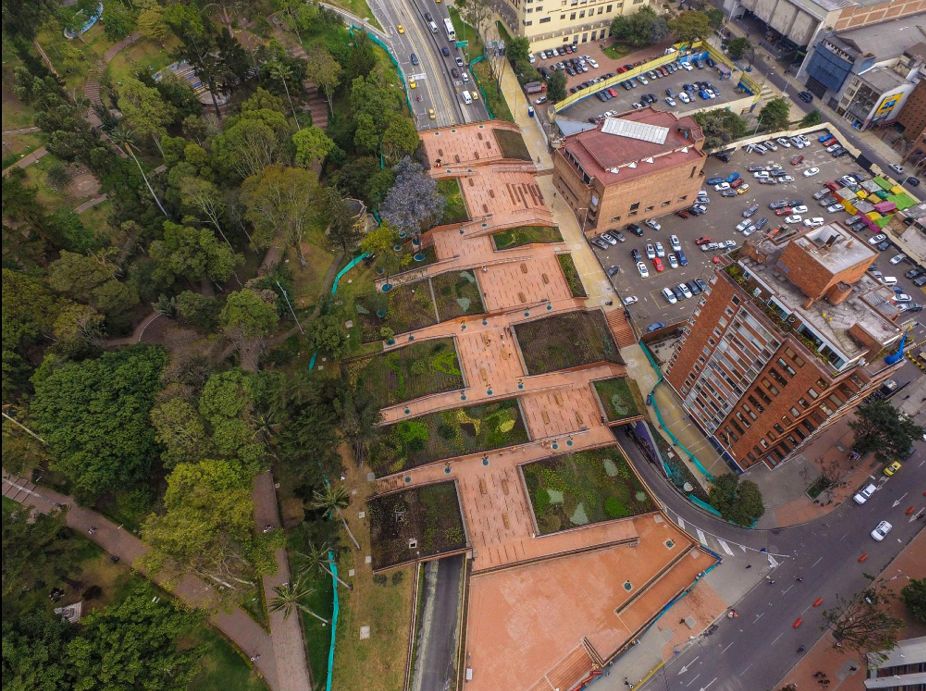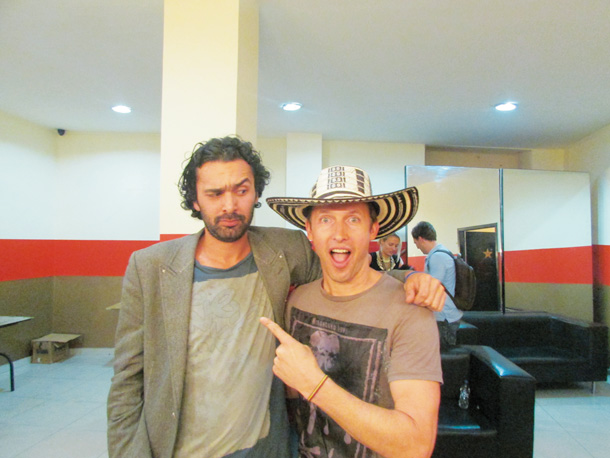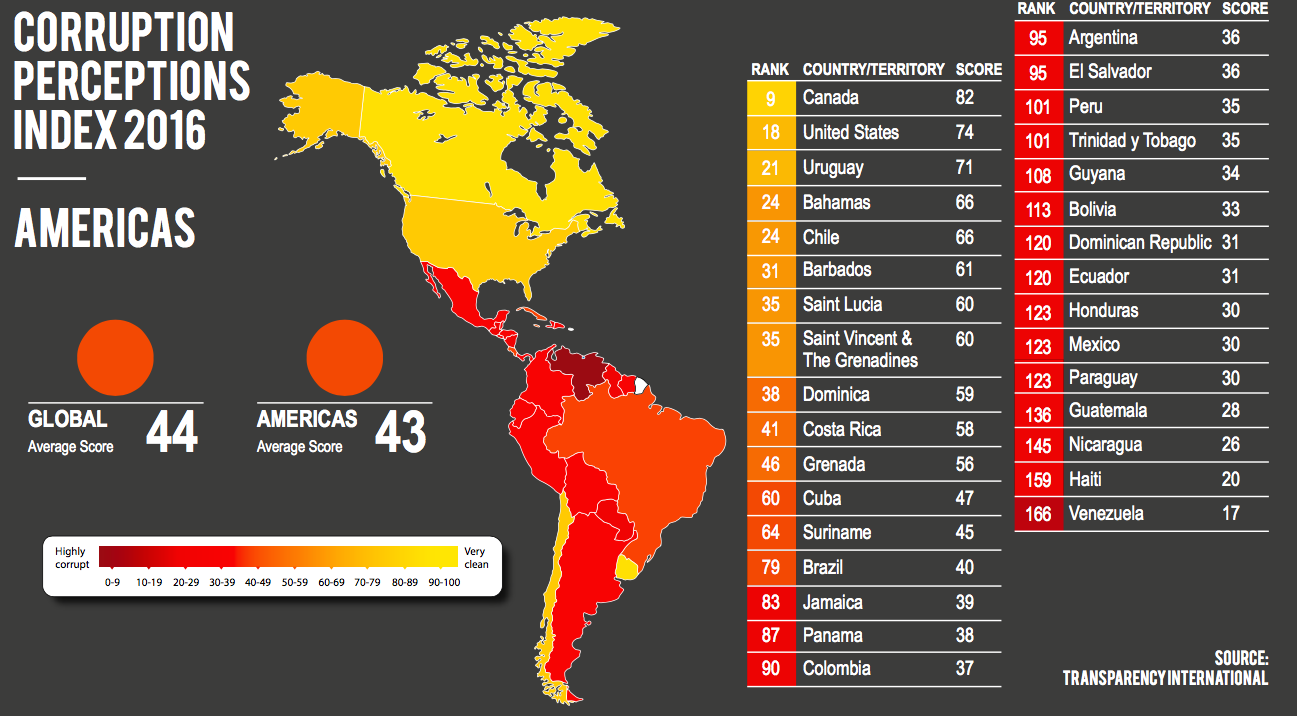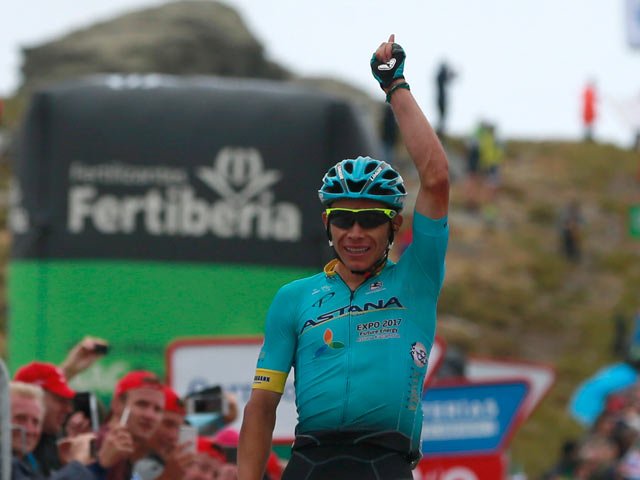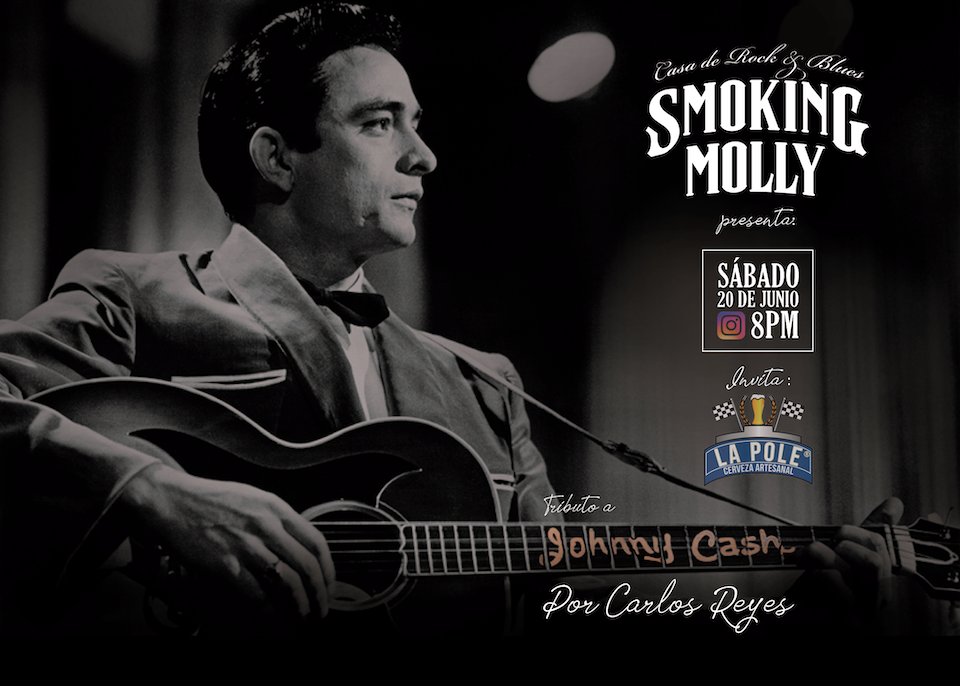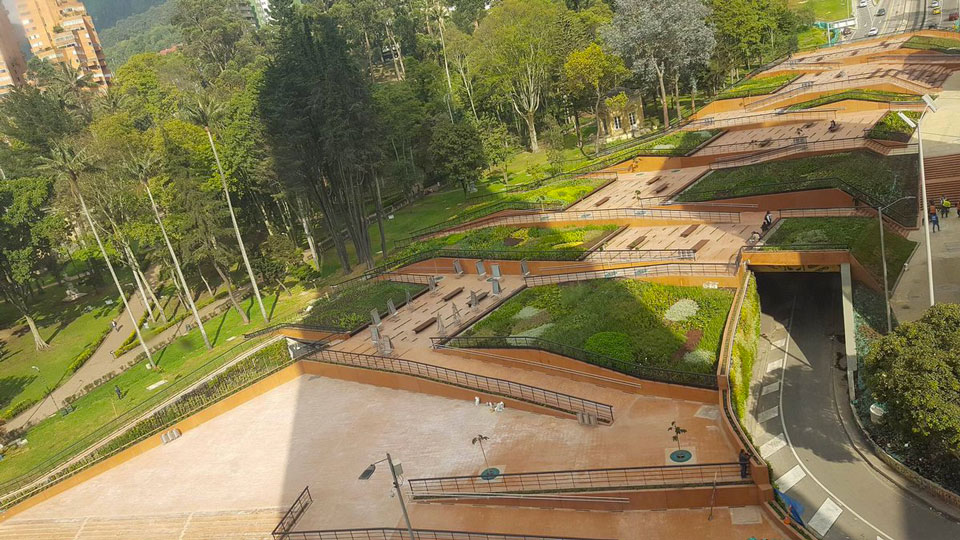
An aerial view of the park looking down from the Septima and along Calle 26 (traversing under the park, reappearing in the top right corner) with the Colpatria building casting a shadow.
The recently opened Parque Bicentenario breathes new life into central Bogotá and represents an innovative reclamation of lost public space. Jazid Contreras looks at the story behind this new landmark.
At first glance, Bogotá looks to be a densely populated concrete jungle filled with high-rise buildings, endless motorways and nonstop traffic. But a closer look reveals a number of parks, vertical gardens and living roofs. One of the newest green spaces in the city is the Parque Bicentenario, which runs along calle 26 between carreras 5 and 7.
As the name suggests, the park was meant to commemorate the 200th anniversary of Colombia’s independence, and so should have been finished in 2010. However, after many struggles and delays, it opened only in late 2016.
The project, which spans a total area of 8,324 square metres and cost an estimated COP$30 billion to complete, was conceived as a way of reinvigorating the downtown area. The park rises above the tunnels of Avenida El Dorado and borders the Museo de Arte Moderno de Bogotá (MAMBo) and the Biblioteca Nacional. At the north, it connects with the Parque Centenario de la Independencia.
One hundred years ago, this park was considerably larger and served as an important landmark around which many of the city’s most iconic structures were eventually built, such as the Torre Colpatria, the Torres del Parque, the Plaza de Toros La Santamaría and the Planetarium.
But in the 1960s, the area became fractured when the eastern end of the Avenida El Dorado was built by cutting through the park. Over the years, the avenue’s expansion chipped away at the park even more, destroying a number of century-old wax palms and rubber trees.
Renowned architect Rogelio Salmona, who designed the Torres del Parque and the MAMBo, called this destruction a “great wound” that detached the centre from the north. Before his death in 2007, he envisioned an urban intervention that would heal the wound and reconnect the area, becoming a seamless extension of the original park.
However, the project inevitably turned into a seemingly never-ending nightmare. It was reassigned to architect Giancarlo Mazzanti, who made changes on the original design and in doing so, unleashed a flurry of criticism. “It ignores the subtlety and imposes itself in a disrespectful way,” said María Elvira Madriñán, president of the Rogelio Salmona Foundation, predicting that: “It will end up becoming an example of what never should have been.”
On top of that, a group of neighbours convinced the Consejo de Estado to halt the construction of the new park over concerns that it would endanger public patrimony and the environment. Eventually, the Ministry of Culture intervened and declared that there was no such danger, giving the project the backing it needed to resume and, after a few more years, reach completion.
Defying gravity
The Parque Bicentenario itself is essentially a large bridge consisting of a sequence of platforms, ramps and gardens that cover a section of the avenue’s trench. According to Mazzanti, a bridge should ideally be more than a structure that connects two places. He asserts that the Parque Bicentenario is meant to coexist organically with the landscape and serve many purposes, for instance, as an outdoor stage for some of the MAMBo’s exhibits.
The gardens are home to dozens of plant species carefully selected by the Botanical Garden. Light fixtures are embedded in the fences or on the ground, along with patches of grass similar to New York’s High Line project.
During its first months of operation, the park has been heavily guarded by security officers and trained dogs. However, this only happens in the newly built area, while the nearby Parque Centenario looks much darker and less watched-over at night.
“The perception of security is a top concern for bogotanos and safe public spaces like these seem to be a luxury in a city where many people prefer shopping malls over parks, because they feel afraid to go out, especially at night,” says Aura Vega, a resident of the area who also feels that the city craves opportunities to enjoy the night outside without fear. “One can see that with events like the Septimazo and the Noche en Blanco in Teusaquillo,” she adds.
The city centre has been struggling for decades to shed its reputation as a dangerous area full of crime. If we take a step back and look at the big picture, the Parque Bicentenario is one of many pieces of a larger-scale initiative to revive the area. So despite its complicated history, the finished park is a step in the right direction, as well as an observation deck to enjoy Bogotá’s increasingly inviting nocturnal scenery.
- The park just before it opened.
- One of the well-lit seating areas within the park. Photos: Jazid Contreras
- Another shot of the park from above looking down from the septima along calle 26.
- The view back across the séptima towards the Hotel Tequendama at night.

